NSKK Visored Field Cap
CATEGORY: Version
SKU: 53.GOR.01.01.03.001.000
Estimated market value:
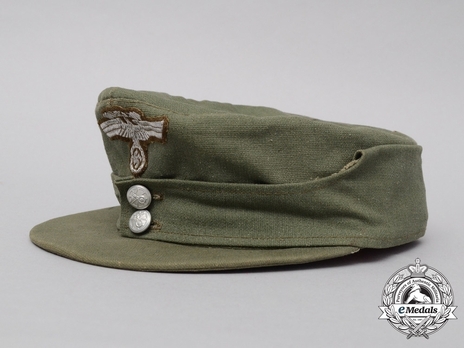
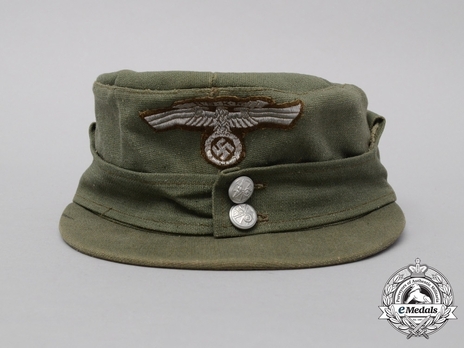
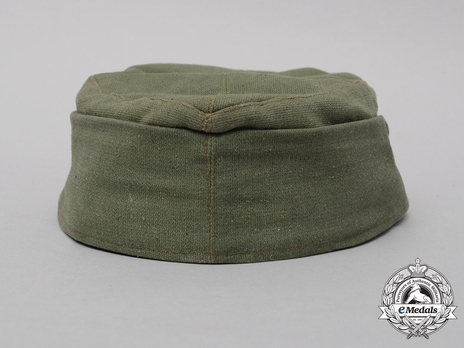
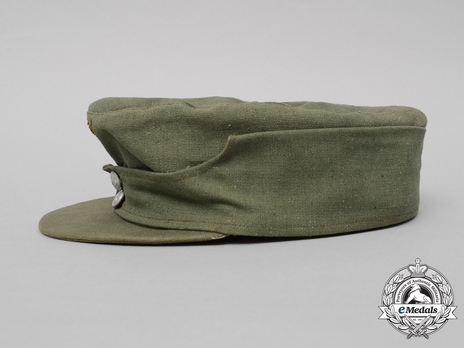
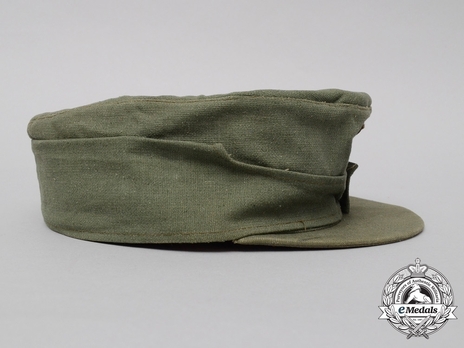

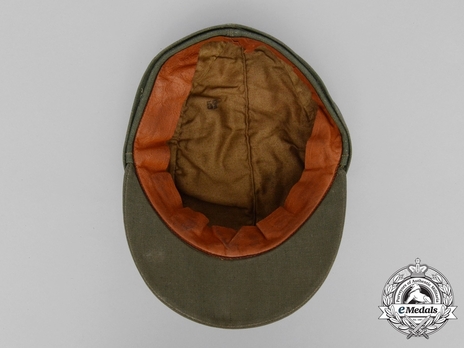
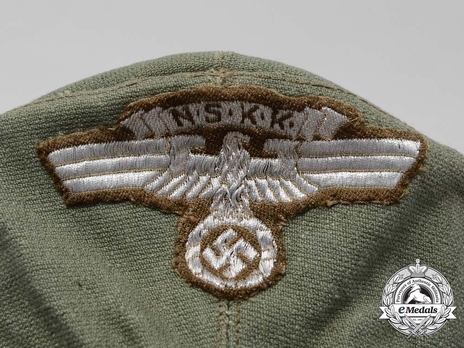
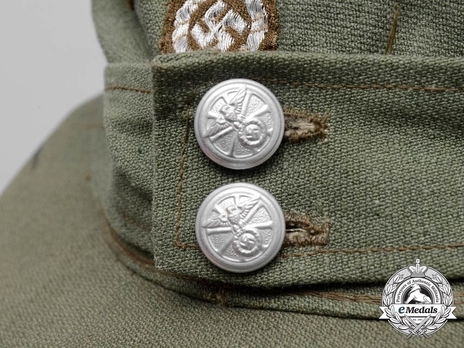
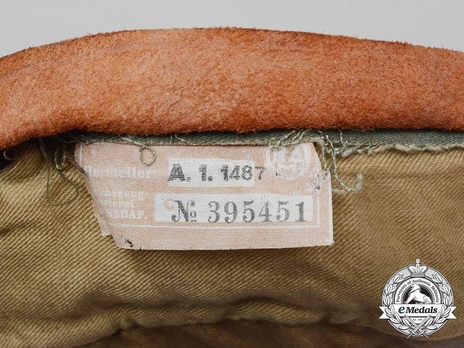
Estimated market value:
This is a very fine Nationalsozialistisches Kraftfahrkorps general issue Feldmütze constructed out of a green cotton/rayon blended fabric with fold down panels with gently sloping, downward scallops to the front and sides, and two vertically oriented (one ontop of the other) silvered aluminum buttons on the front, with the NSKK insignia in high relief, maker marked “RZM M5/82” (Steinhauer & Lück, Lüdenscheid). In the front center of the cap is a machine embroidered, hand attached, NSKK cap eagle insignia in aluminum bullion wire with on an olive-green backer, illustrating an eagle sitting, with its talons gripping a wreath swastika below, with a ribbon banner above inscribed “NSKK”. The cap also has a cardboard reinforced front visor and khaki/green coloured interior liner with a dark brown leather sweatband around the circumference of the cap. There are no markings anywhere on the cap besides a “57” stamped in black ink on the inside of the cap. The cap measures 235 mm x 200 mm and is in used, but otherwise very fine condition.
The NSKK (Nationalsozialistisches Kraftfahr-Korps = National Socialist Motor Corps) was a paramilitary organisation affiliated with the NSDAP, specialising in anything related to the driving of motorised vehicles. NSDAP officials recognised the need for access to cars and trucks for both transportation and propaganda purposes as early as 1922, and certain steps were taken to ensure this need was met. However, it took until April of 1930 for a specialised motor organisation to be officially founded. This organisation was named NSAK (Nationalsozialistisches Automobil-Korps = National Socialist Automobile Corps), but was renamed to NSKK less than 13 months later.
Initially, the NSAK/NSKK was under the control of the SA and existed next to its parent organisation’s own driving-related sub-organisation, the Motor-SA. This changed after the “Night of the Long Knives”, in which many SA leaders were purged and the organisation was substantially disempowered. After July of 1934, the NSKK became an independent organisation whose leader, NSKK-Korpsführer Adolf Hühnlein, answered directly to Adolf Hitler.
The main tasks of the NSKK were to provide transportation for all organisations of the Third Reich, to train and instruct boys and men (and a number of women) in mechanics and driving, and to assist police in regulating traffic. During the mid 1930s, the organisation also provided roadside assistance.
With the onset of the war, the NSKK’s tasks underwent certain changes. Instructing both civilians and soldiers in the driving and maintenance of armored vehicles became a higher priority. The NSKK also began working closely with other organisations, for example Organisation Todt (OT), by providing transportation of workers and supplies for the colossal building project that was the fortification of Germany’s Western border, the Siegfried Line (or Westwall). During the war, the NSKK provided much of the transportation needs for the German Army and the Luftwaffe, including the transport of troops, weapons and ammunition, and building materials, for example for the construction of air bases in the newly conquered territories in Eastern Europe after the attack on Soviet Russia in the summer of 1941.
Parts of the NSKK would come under the control of architect Albert Speer who took over OT after the death of Fritz Todt in 1942, leading to the creation of Transport Brigade Speer (later Transport Corps Speer), which would eventually completely sever its ties to the NSKK.
Several different but similar visored field caps were worn by members of the NSKK.
The first visored field cap, that is, a cap with a cloth-covered visor, was worn by students at the NSKK Motor Schools in 1934. The cap was olive-brown in colour and had its side flaps held in the front by a single pebbled silver-coloured button. Above the button was the only insignia, a small NSKK eagle made of metal. Presumably, as the cap insignia evolved, the small eagle was replaced by the later NSKK eagle version.
The crown of the cap was piped in dark brown. Lower leaders had silver piping, and higher leaders or those with special functions could wear additional silver flap piping, gold crown piping, or two-coloured white and brown piping. In 1936, Tresse (braid) was introduced for leaders with a special function.
This cap was discontinued in the late 1930s.
A ski cap of similar design was first mentioned in regulations in December of 1936, but photographic evidence shows that it was worn prior to that date. This cap is grey-green in colour and has two silver buttons at the front, holding the side flaps. Instead of a metal cap eagle, a machine-woven NSKK eagle was featured. There was no piping on this cap.
In the spring of 1943, the visored field cap M(odel)43, also known as the “Einheitsfeldmütze” (standard field cap), was introduced. It was worn by virtually all military and paramilitary organisations with their respective insignia. The two buttons on the NSKK version of this cap sometimes featured the embossed NSKK eagle emblem, or the cap even had plain olive buttons. Like the ski cap, the M43 cap featured a machine-woven eagle insignia.
The cap was usually olive-brown, but NSKK members supplying the Army sometimes wore a field-grey version, and those supplying the Luftwaffe sometimes wore the cap in blue-grey.

Comments
Sign in to comment and reply.


Scroll Top